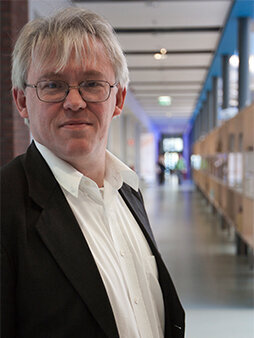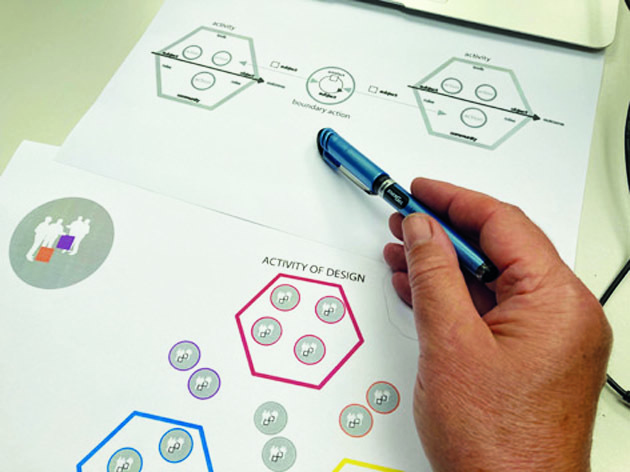Helping designers give UX insights a longer life
User experience (UX) insights into design decisions and how to best apply them are key to human-centred design (HCD) and influence how products and services will ultimately be experienced. But once a designer is no longer actively involved in the development process, UX insights are often neglected, reducing the UX quality of the product or service. This phenomenon inspired Lilian Henze’s PhD research into how designers can prevent it from happening and actually facilitate the use of UX insights in the entire development process.
Loss prevention
From decades of facilitating design teams as a partner at P5 Consultants, Lilian Henze recognised a frustrating pattern: the results of her user research were used for a very short period in a design project and then seemed to vanish. ‘The results of the research often disappear in the gap between the disciplines (e.g., engineering, research, marketing, sales) or don’t sustain over time (e.g., due to changes in the design team)’, wrote Henze in her thesis. “That annoyed me so that was the start of my PhD research,” she said. “I wanted to find a solution for designers to prevent these insights from getting lost.”
Examining the process
To begin with, Henze focussed on the human- centred design process, where design methods and skills are used to collect information on UX. This information is interpreted to form UX insights and these insights are used to create and deliver solutions that will fit the needs of the users. With a shift in recent years from designing products to designing products and services as part of a product-service system (PSS), it has become more challenging and even more important to understand people’s needs and the design process that is based on those needs.
As Henze noted in her thesis, in PSS design, people other than designers make design decisions through using interpretations of user’s aspirations and needs, and balancing them with technological opportunities and business requirements. Her research confirmed that UX insights indeed get lost when designers are no longer actively involved in a product-service system (PSS) development process. More specifically, it was found that UX insights are disregarded because designers do not encourage and facilitate others to continue using them in the entire PSS development process.
NHCD
The challenge Henze aimed to address was how to communicate and deploy the results of user research in the design process with an emphasis on interdisciplinary collaboration. She coined a new concept called networked human-centred design (NHCD), defined as a design process in which UX insights are translated in order to assemble designers, experiencers, and organisers in considering UX insights in design decisions. In other words, it’s about actively connecting actions in a human-centred design project through translation of UX insights.
“Human-centred design doesn’t stop at the moment that a designer is out of a project,” said Henze. “During the lifecycle of a product or a service there are a lot of people involved in making design decisions. You actively have to build this network so that after you, as a designer, disappear from a project others will still continue using these UX insights.”
Tools for designers
Through her research, Henze determined that designers can enable their clients to effectively and continuously use UX insights. Designers can create interventions in the meetings they have with the design team and clients. To help them do this, she visualised a step-by-step process: identifying when and how to use interventions by making a project map (identify), making organisers aware of human-centred de¬sign decision making (trigger), involving organisers in making these decisions (engage), and providing UX insights that are actionable in the activity of organisa¬tion (equip), so that the organisers can continue using UX insights in design decision making.
To help put this into action, Henze also developed the Networked Design Canvas (NDC) toolkit, enabling design decision makers to use UX insights, guidelines for creating interventions that fit the steps in project meetings, and a tool to map and plan these interventions in a networked human-centred design project. Designers can use this toolkit to identify when design decisions will be made later in the process and what actions they can take to support those beforehand. Henze considers these steps and tools to be the main contributions of her research.
From PhD to retirement
Henze was not a stereotypical PhD student. Having studied industrial design at the TU Delft | Faculty of Industrial Design Engineering (IDE), she earned a master’s degree in 1986, went on to build a successful career as a design facilitator, and plans to retire at the end of this year. She says doing a PhD at IDE was hard but rewarding. “Deeply diving into something was a good adventure and I’m proud that I finished it,” said Henze. “I hope that my work will be useful because there’s a lot of further research that can be done. And if people are interested, now that I’m retiring, I’m happy to help out and support further research and implementation in design practice and education. I think it could help people in their future work.”
Design methodology
Henze used a generative research approach during her PhD, which involved professionals reflecting on their practice of product-service system (PSS) design. This reflection was supported with generative tools, for example by jointly making visualisations of and discussing their insights on design practice.

Pieter Jan Stappers
- +31 (0)15 27 85202
- P.J.Stappers@tudelft.nl
- Personal webpage
-
Room C-3-130
"Speels en degelijk"

Ingrid Mulder
- +31 (0)15 27 85637
- I.J.Mulder@tudelft.nl
-
Room C-3-070
"Linking people through design."

![[Translate to English:] Lilian Henze's thesis cover](https://filelist.tudelft.nl/user_upload/Thesis_cover.png)

